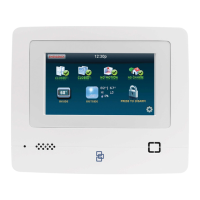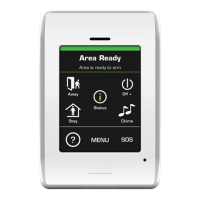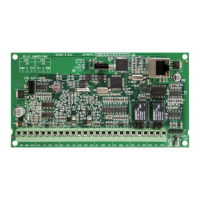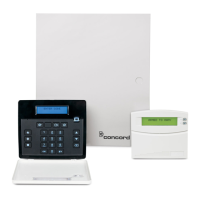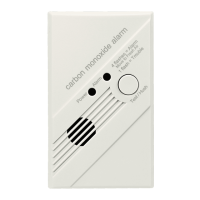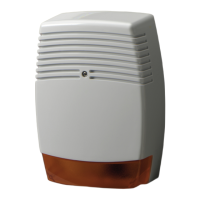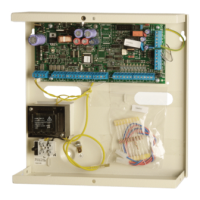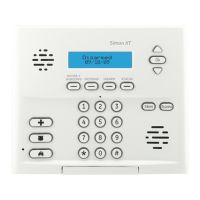





Do you have a question about the Interlogix Simon XT and is the answer not in the manual?
| power requirements | 6V nominal |
|---|---|
| standby current | 30mA (10mA in PowerSave Mode) |
| peak current | 1.7 A |
| operating temperature | 32 to 120°F (0 to 49°C) |
|---|---|
| storage temperature | -30 to 140°F (-34 to 60°C) |
| max. relative humidity | 90% non-condensing |
| height | 4 1/16 in. |
|---|---|
| width | 1 7/8 in. |
Explains how the system communicates with the user via messages, beeps, and lights.
Details the buttons, display, and features of the main control panel for system operation.
Lists the key capabilities and functions of the Simon XT system.
Explains how to control sensor activity and arming levels for home protection.
Describes the process of arming and disarming the system to manage sensor activity.
Details the timed delays for entering and exiting the premises without triggering an alarm.
Explains how to temporarily disable specific sensors while the system is armed.
Describes the system's alarm indications and how to cancel them.
Covers controlling lights and appliances via modules and sensor triggers.
Explains the chime feature for notifications when doors are opened while disarmed.
Describes using motion sensors for notifications of approaching individuals.
Details the feature for notifying about a family member's late arrival.
Explains how to check alarm conditions, history, and sensor status.
How to remotely control the system via telephone.
How to use touchpads like remote keypads and keyfobs.
Details the operation of the remote handheld control.
Explains the functionality and operation of the keyfob.
Explains the different beep patterns indicating system events and conditions.
Describes the function of sirens and lamp modules for alarm indication.
Explains the meaning of various LED indicators on the control panel.
Describes the system's self-testing capabilities for failures.
Explains what happens during an AC power outage and backup battery operation.
Details issues related to the system's backup battery failing.
Describes the system's state after a complete power loss and restoration.
Explains how to identify and address sensor communication problems.
Details how to identify and resolve low battery issues for sensors.
Explains issues when the system cannot contact the central monitoring station.
Describes the condition when a sensor is disturbed or not reset properly.
Explains how to identify and resolve sensor tampering issues.
Discusses interference with the panel's receiver.
Instructions on how to clear system status messages and conditions.
Guides on how to enter and navigate the system's main menu.
Explains the different types of access codes (master, user, duress).
Details how to navigate through menus and select options.
Detailed steps to reset the system's clock and time format.
Instructions for setting the system's date.
Steps to enable or disable the chime feature.
Steps to enable or disable the special chime feature.
Overview of system tests like sensor and communication tests.
Accessing and navigating the system programming submenu.
Detailed steps to reset the system's clock and time format.
How to enable or disable timed lighting control.
Configuring lights to activate when sensors are tripped.
Steps to enable or disable the chime feature.
Steps to enable or disable the special chime feature.
Overview of system tests for sensors and communication.
How to adjust the display contrast setting.
Details on managing master, user, and duress codes for system access.
Instructions for changing the system's master code.
Steps to change or delete user codes.
How to change the duress code for silent alarms.
Configuration of the download enable option for remote access.
How to change the system's programmed phone number (Phone #4).
Setting the Latchkey time for alarm notifications.
Configuring panel piezo beeps, panel voice, and alarm volumes.
Enabling or disabling non-alarm beeps on the siren.
Enabling or disabling spoken status messages and arming level changes.
Enabling or disabling loud alarm beeps on the siren.
Setting the volume for non-alarm beeps.
Setting the volume for the panel speaker for key presses and sounds.
Overview of controlling lights via modules, sensors, and schedules.
Configuring entry lights to flash with arming levels.
Configuring lights to activate when sensors are tripped.
Programming timed activation/deactivation for lights.
How to change the housecode for light control.
Programming lockout times for sensor-activated lights.
Step-by-step guide to testing individual system sensors.
Methods for triggering various sensors for testing.
How to test the system's connection to the monitoring station.
Steps to start a download call for system programming updates.
Discusses the inherent limitations of alarm systems.
Guidelines for developing and rehearsing emergency plans.
Recommendations for optimal placement of smoke and heat detectors.
Guidelines for creating a floorplan detailing system components.
Instructions to list sensor and module placements.
